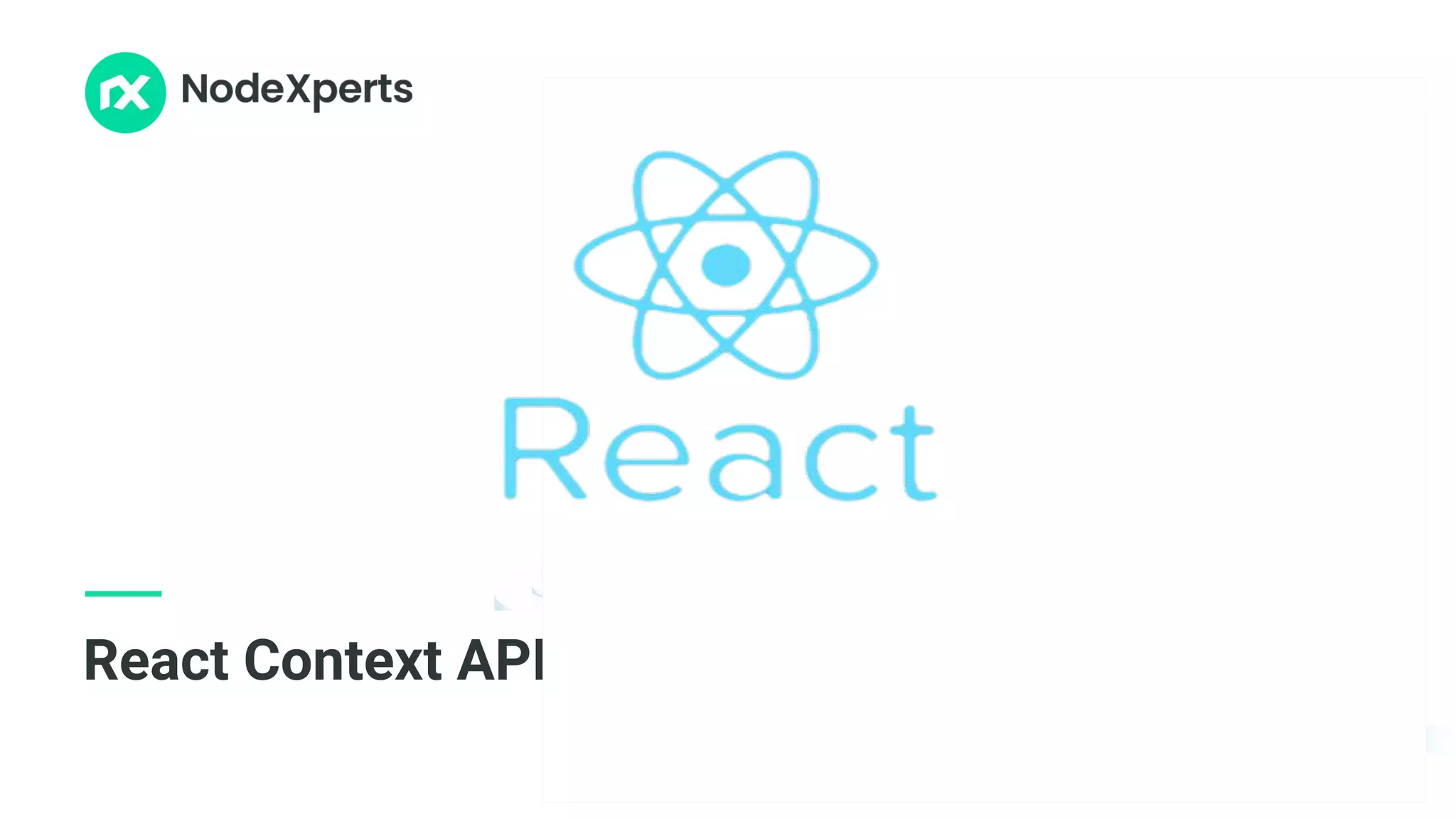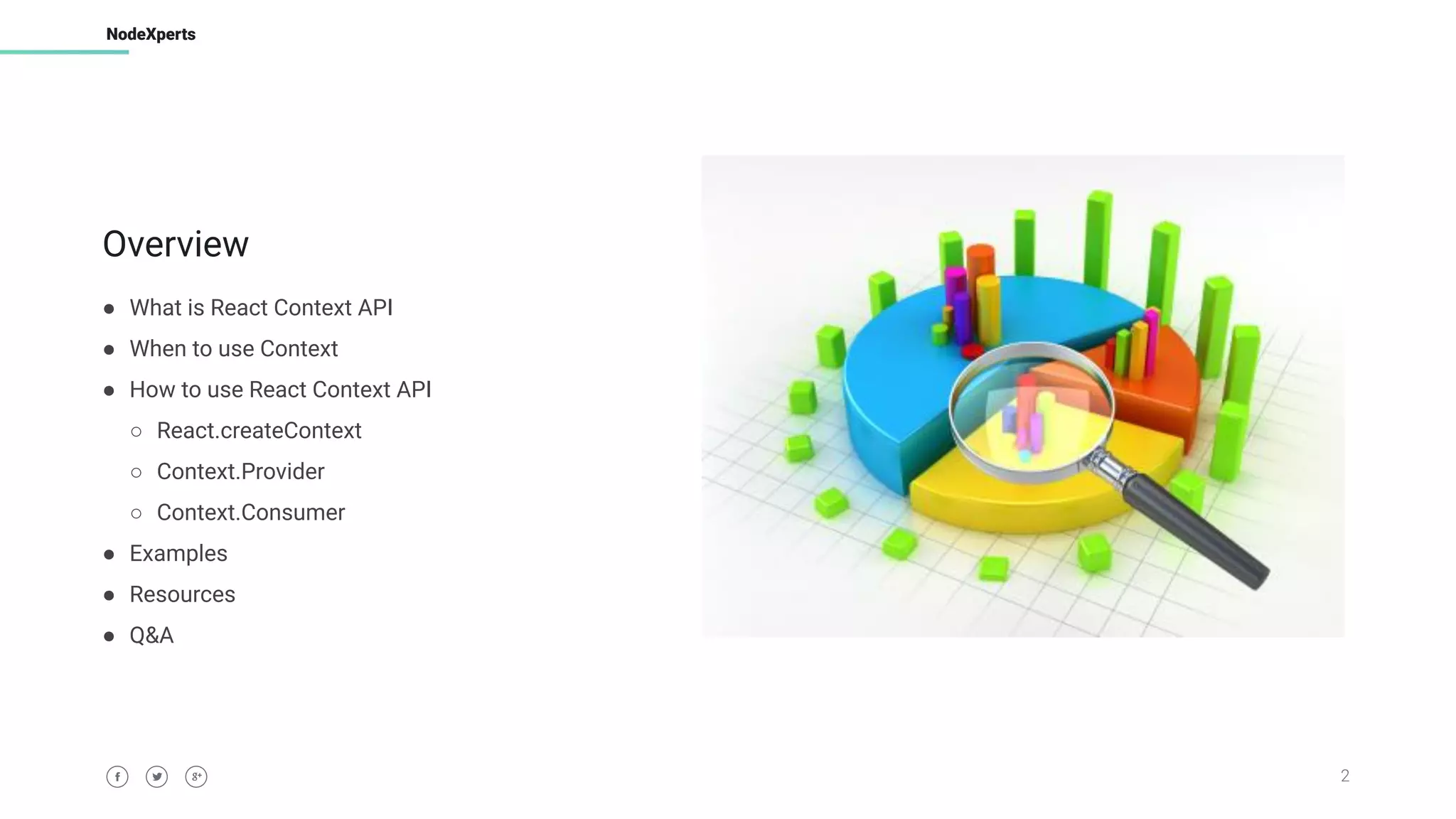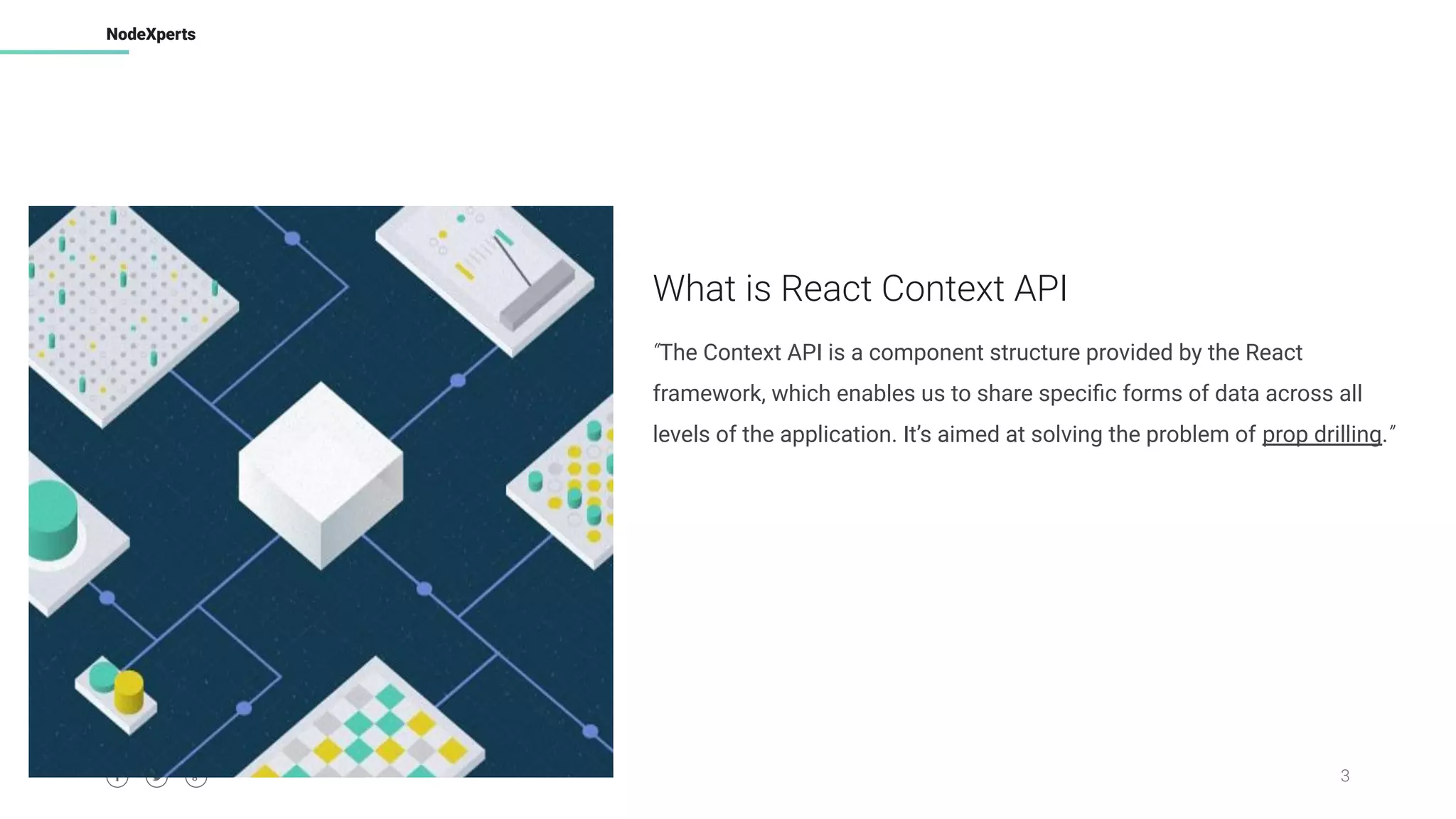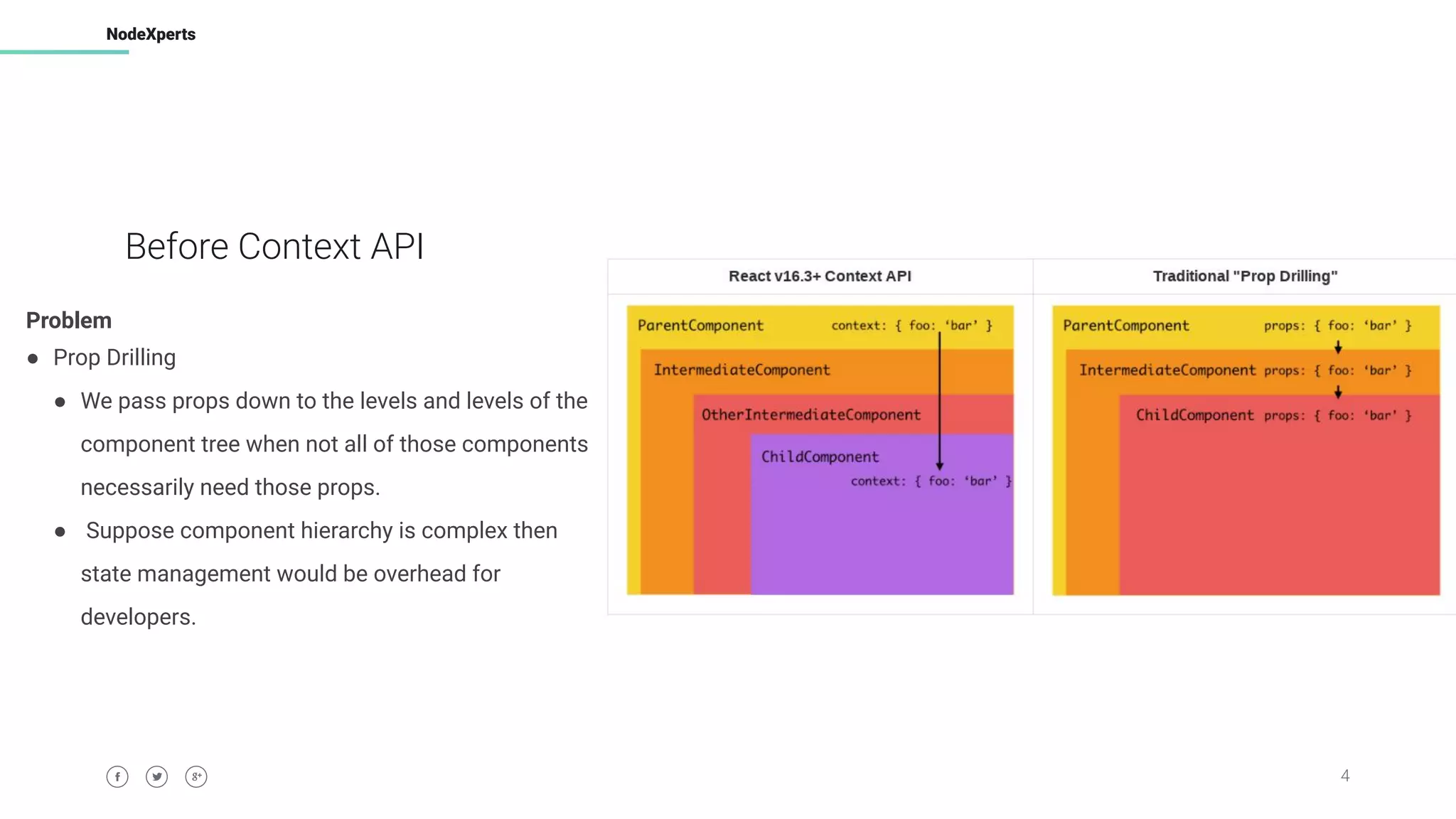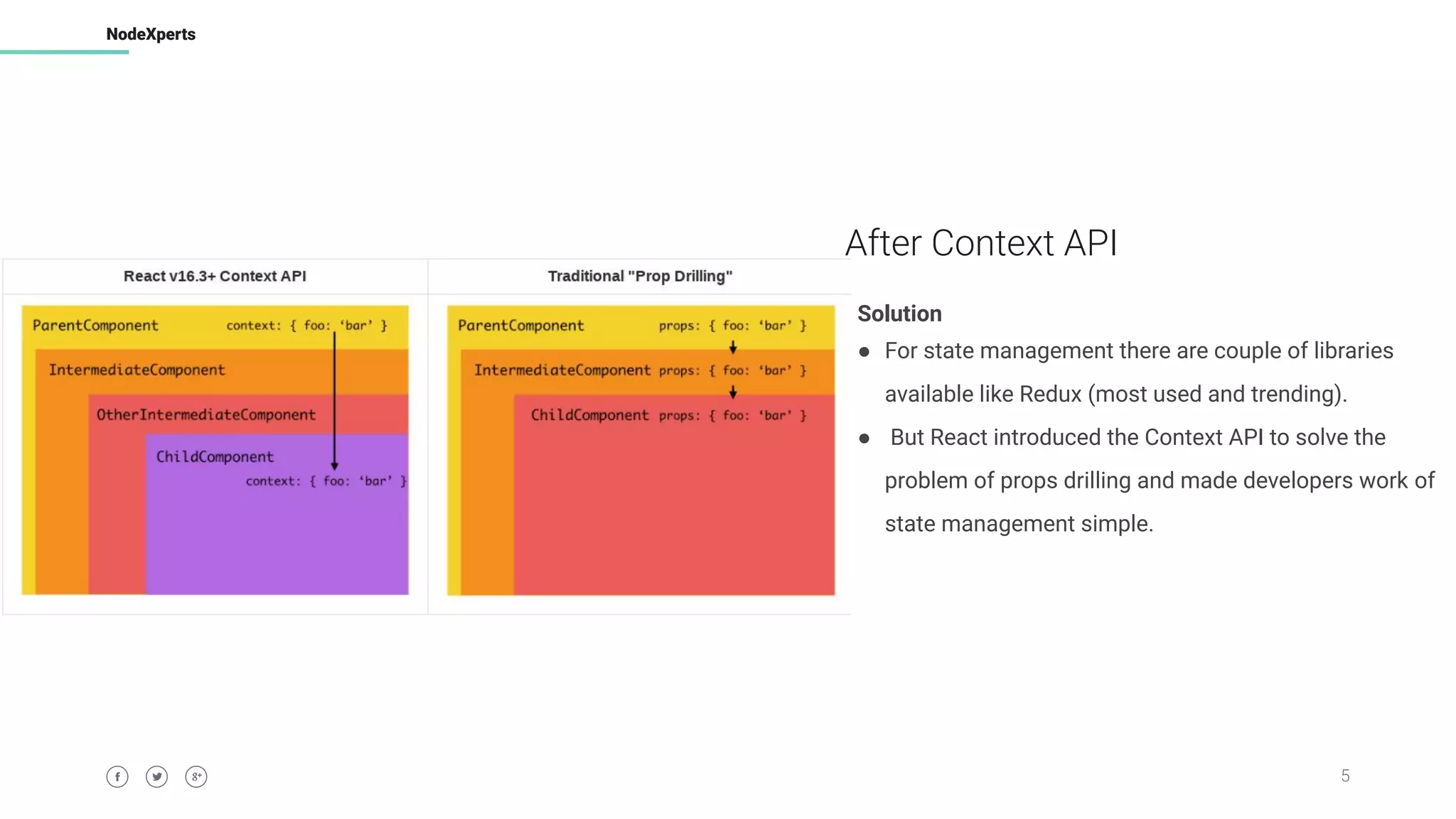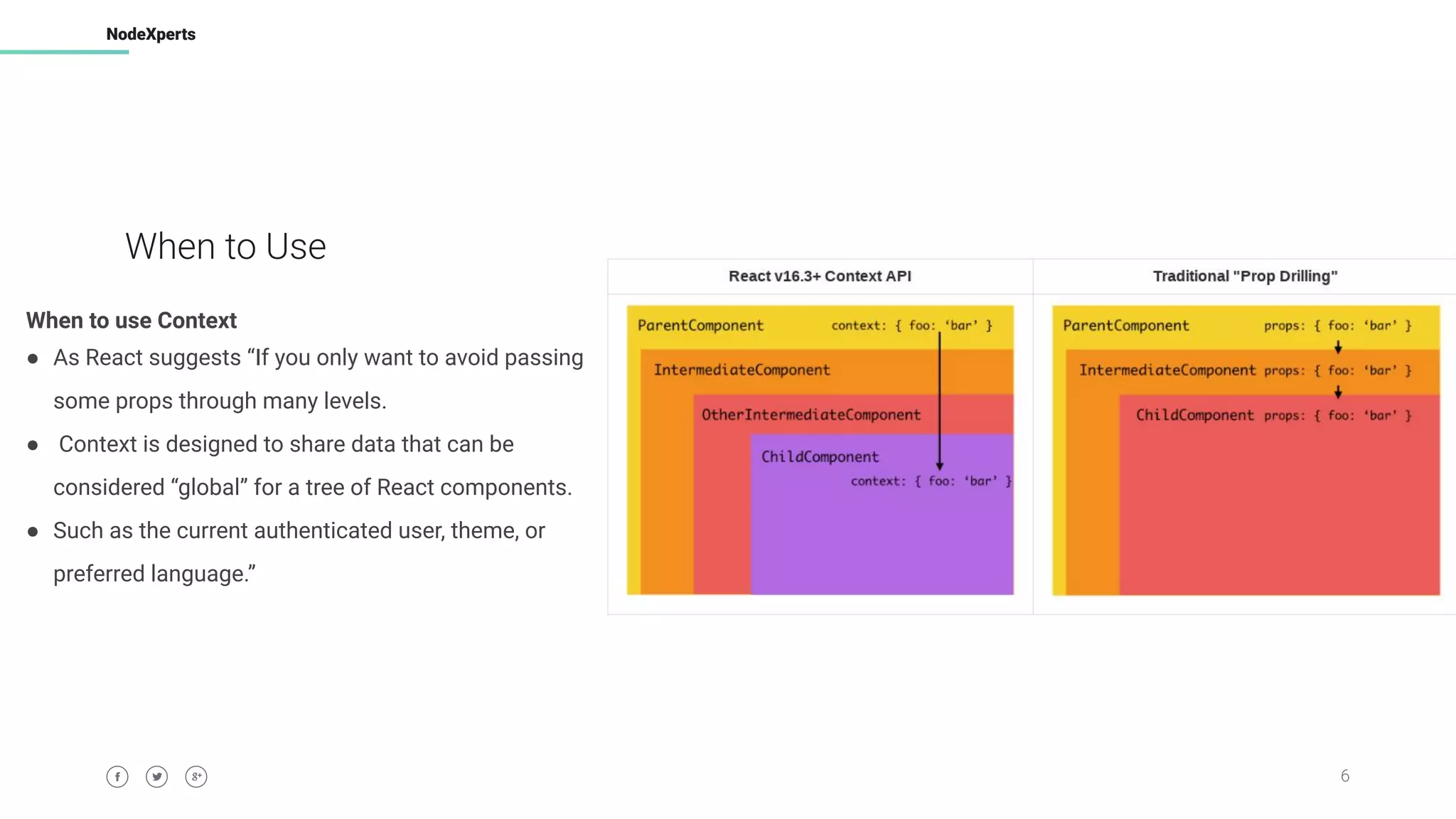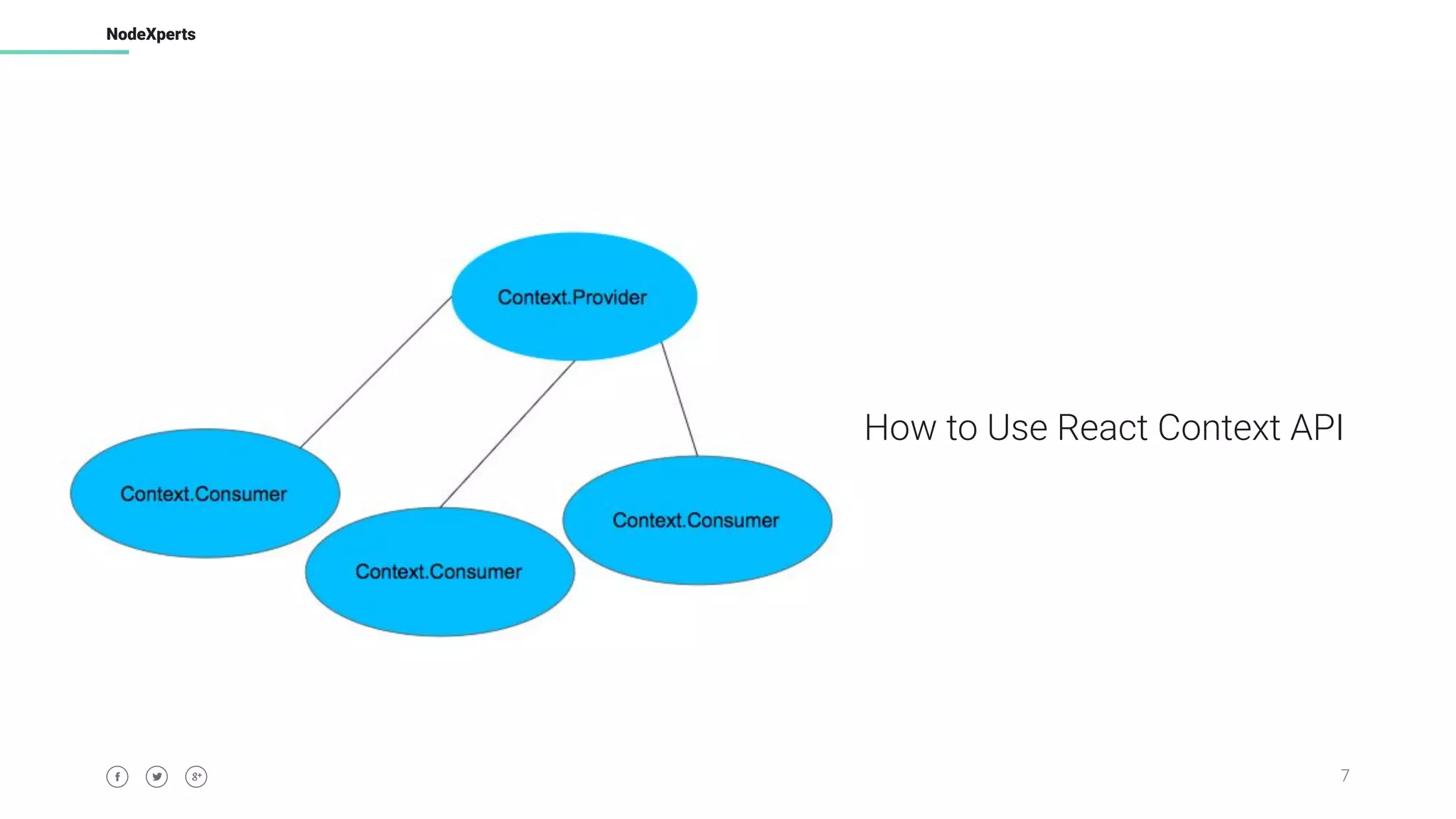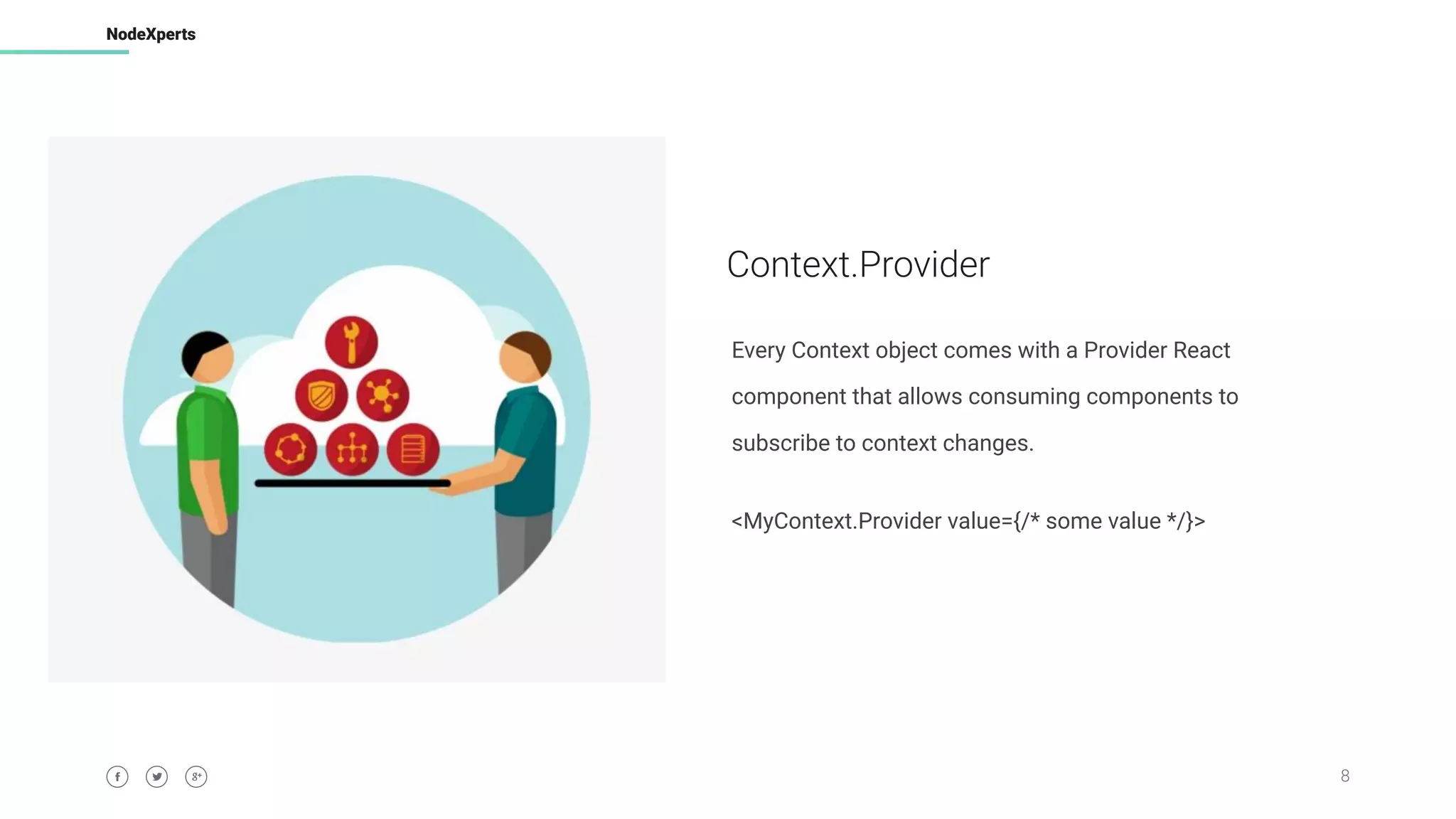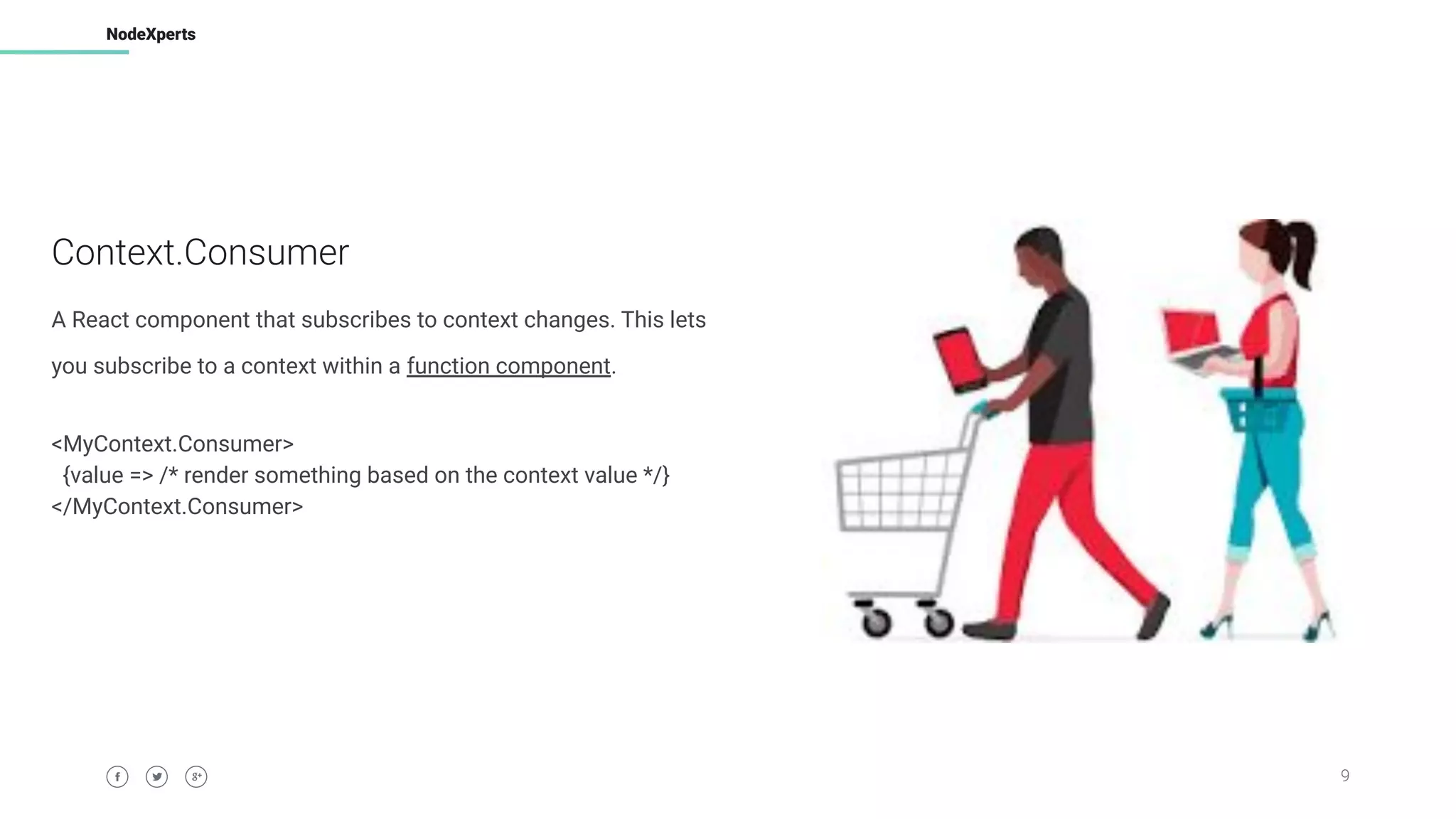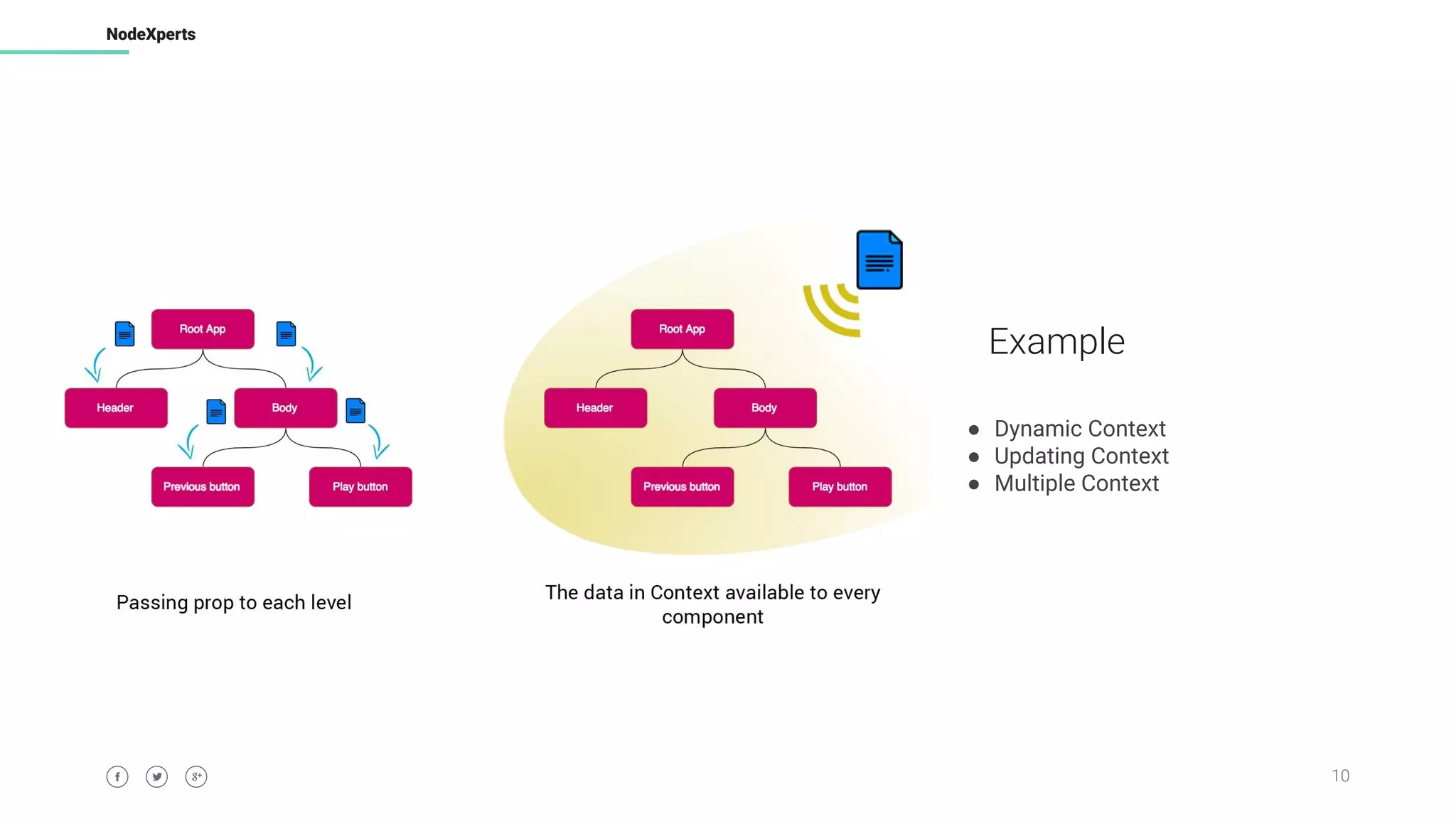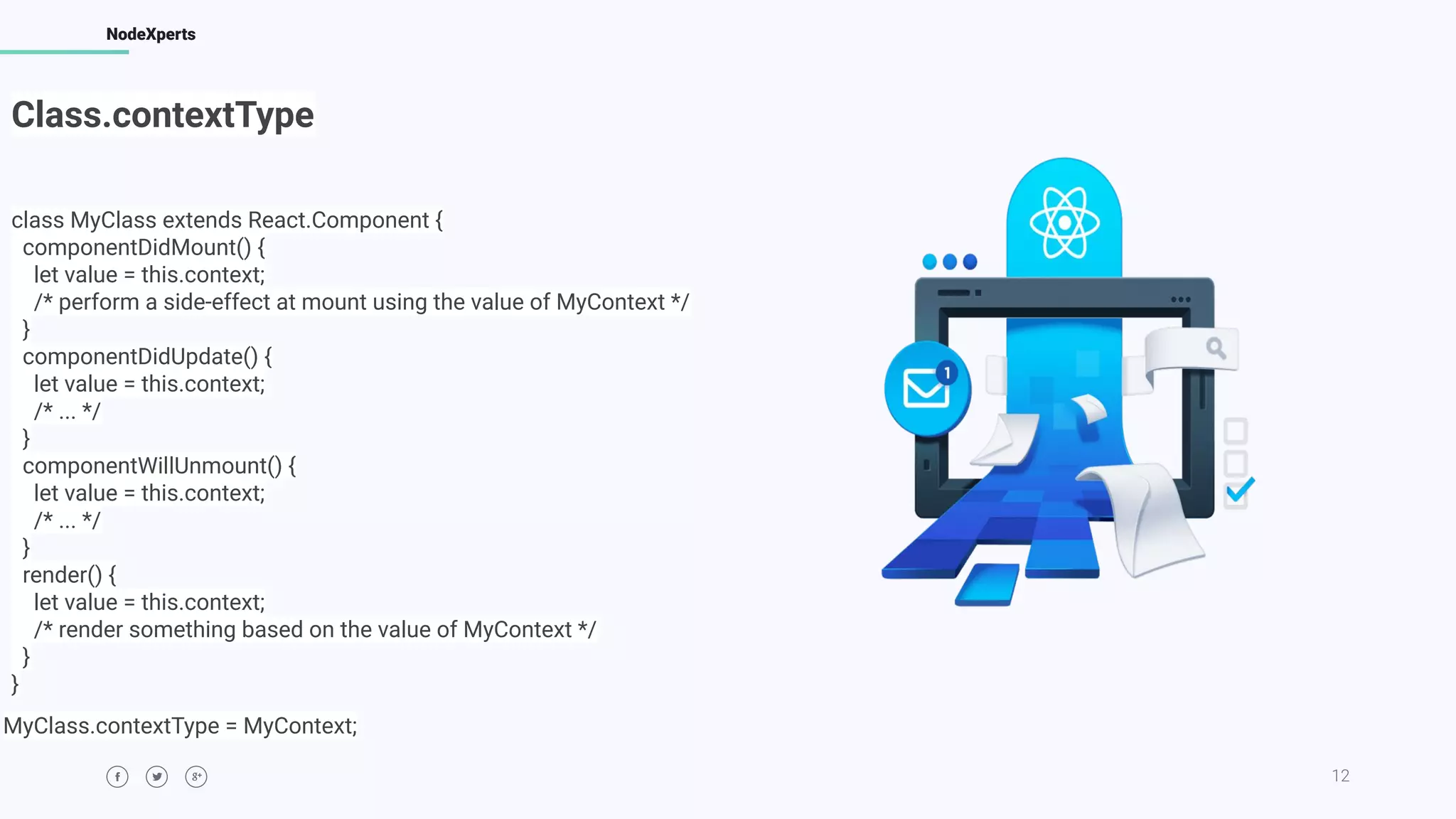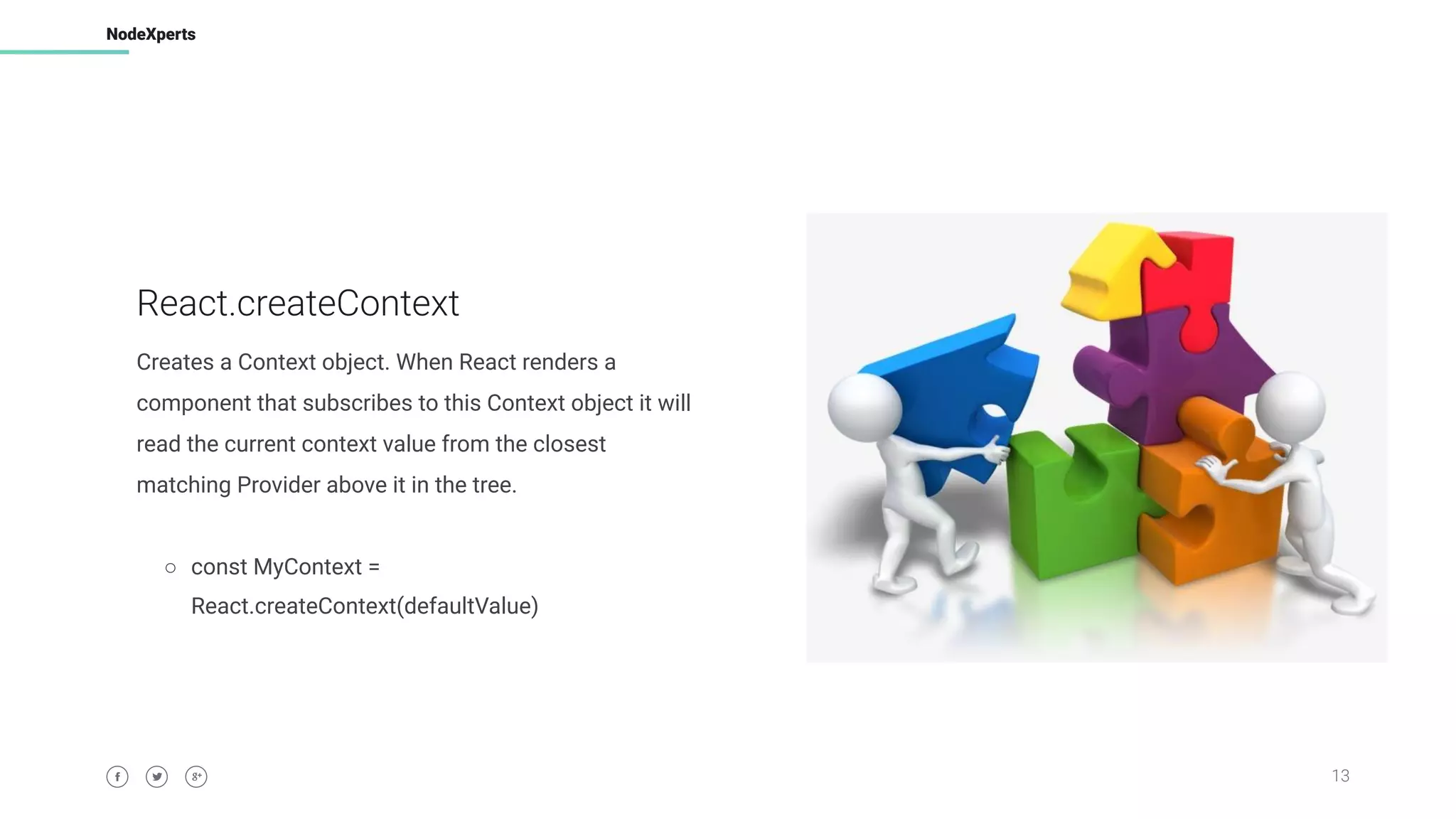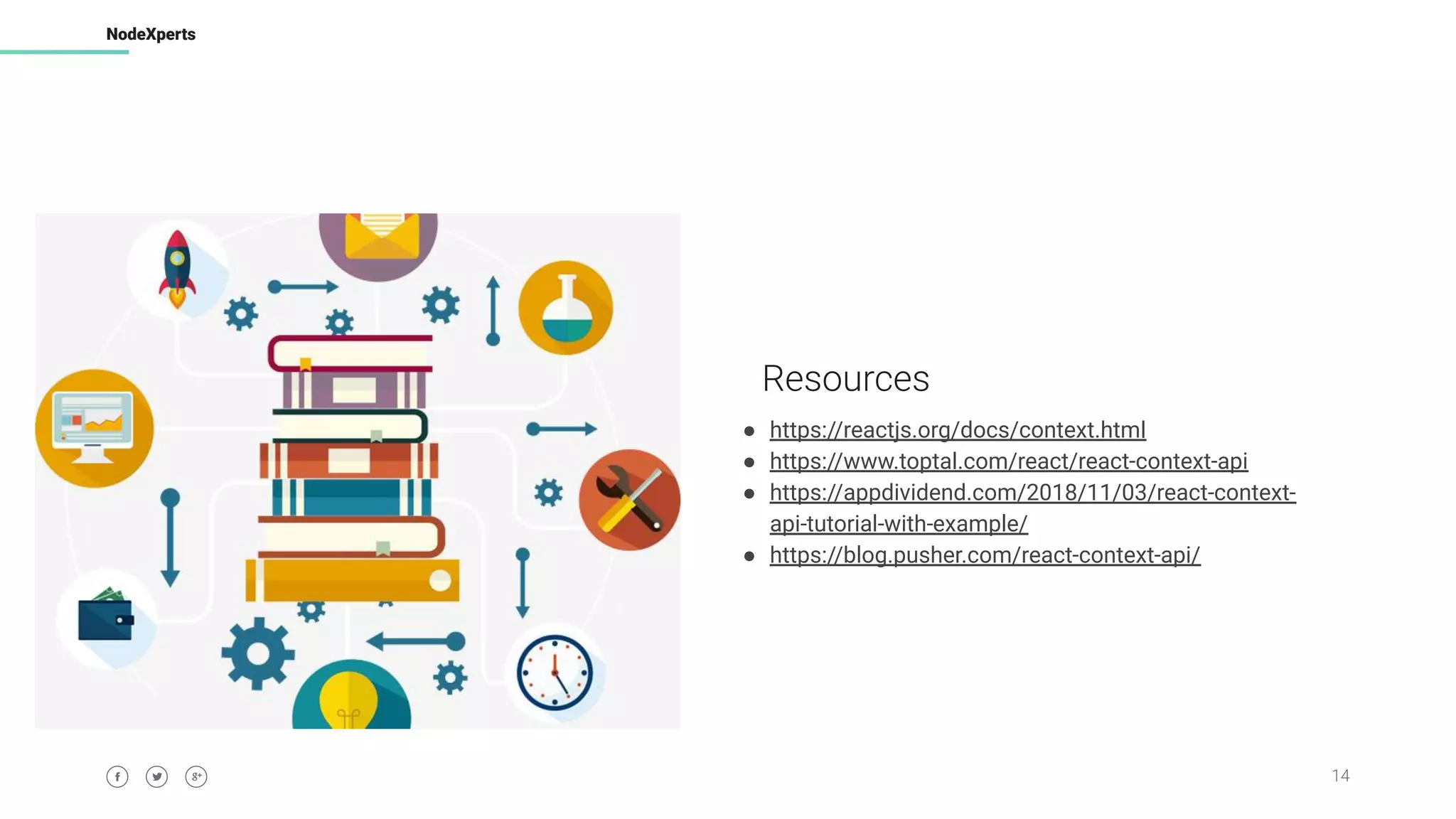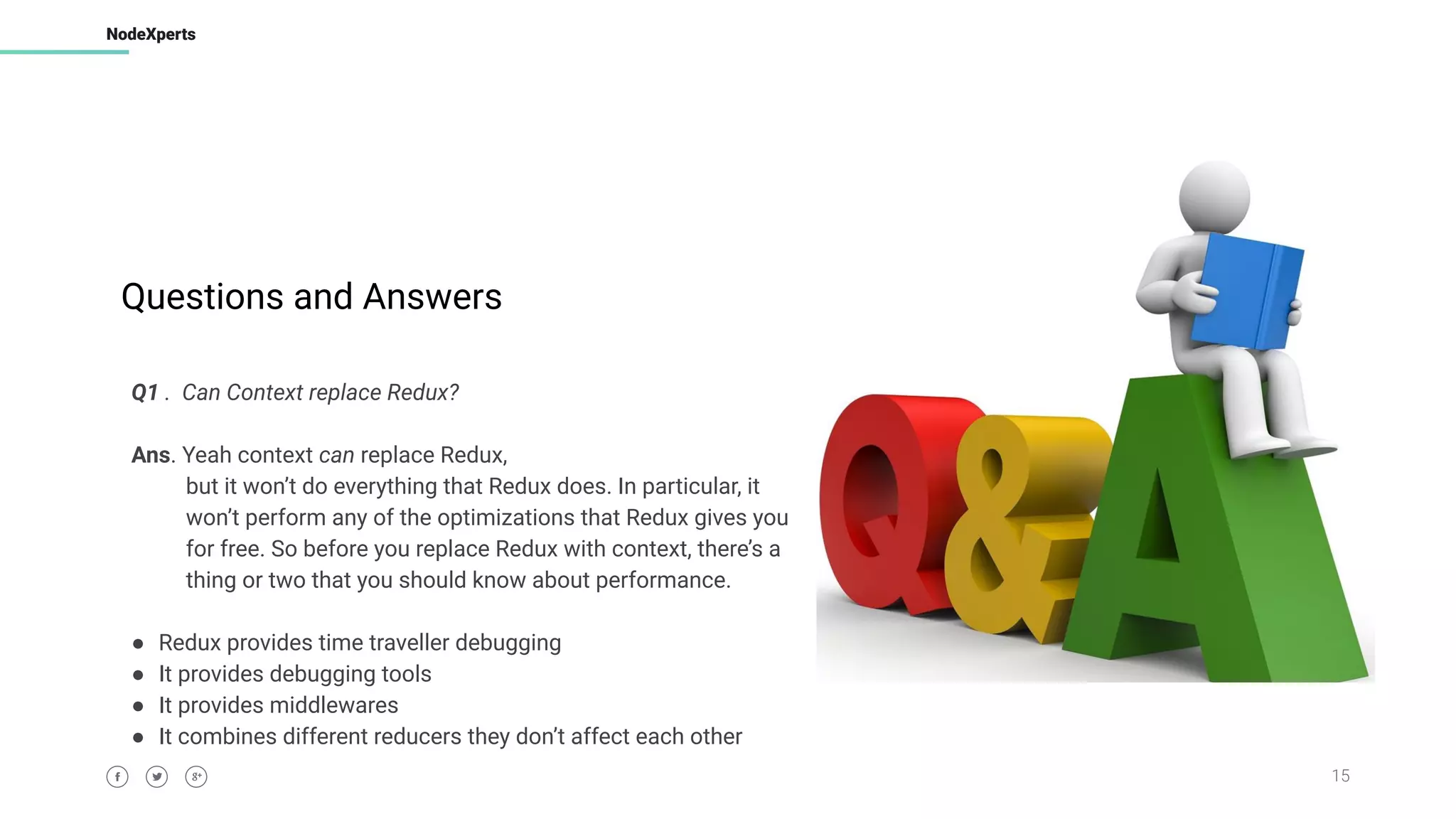The document provides an overview of the React Context API, including what it is, when to use it, and how to use it. It explains that the Context API was introduced by React to solve the problem of prop drilling and make state management simpler for developers. It describes the key aspects of using the Context API, such as creating contexts with React.createContext, rendering context providers with Context.Provider, and subscribing to contexts within components using Context.Consumer. Examples and additional resources on the Context API are also provided.
